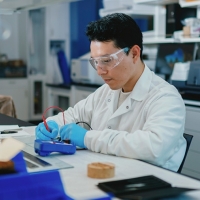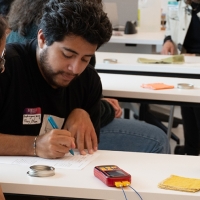SFSU researchers’ unique 3D maps might help solve the mysteries of octopus arms

Two new papers could help improve understanding of octopus arm function, development, evolution and more
Octopuses are fascinating. Their eight arms gracefully whip through water and can accomplish extraordinary tasks like using tools and opening jars. While humans have one spinal cord attached to their brain, in octopuses, it’s almost like each arm has its own spinal cord (minus the actual spine) and nervous system. These arms can even initiate a response without consulting the brain.
How octopus arms can do all this at a cellular level has largely remained a neuroscience mystery — one that’s proved difficult to study because of technological limitations and the expense of research. But now San Francisco State University researchers are starting to provide answers.
Trying to overcome those previous limitations, the San Francisco State researchers created three-dimensional molecular and anatomical maps of the inner neuronal circuitry of octopus arms. Their recent findings were published in two scientific papers in the journal Current Biology.
“Having [these two papers] converging at the same time means the amount we can learn from any single experiment is just astronomically higher,” SF State Biology Associate Department Chair and Assistant Professor Robyn Crook said of her lab’s research. “I would say these papers are really facilitating discovery in new ways.”
This research was supported by an Allen Distinguished Investigator Award, a Paul G. Allen Frontiers Group advised grant of the Paul G. Allen Family Foundation. Crook’s Allen Distinguished Investigator (ADI) grant was the first recipient in the California State University (CSU) system since the grant’s inception in 2010.



